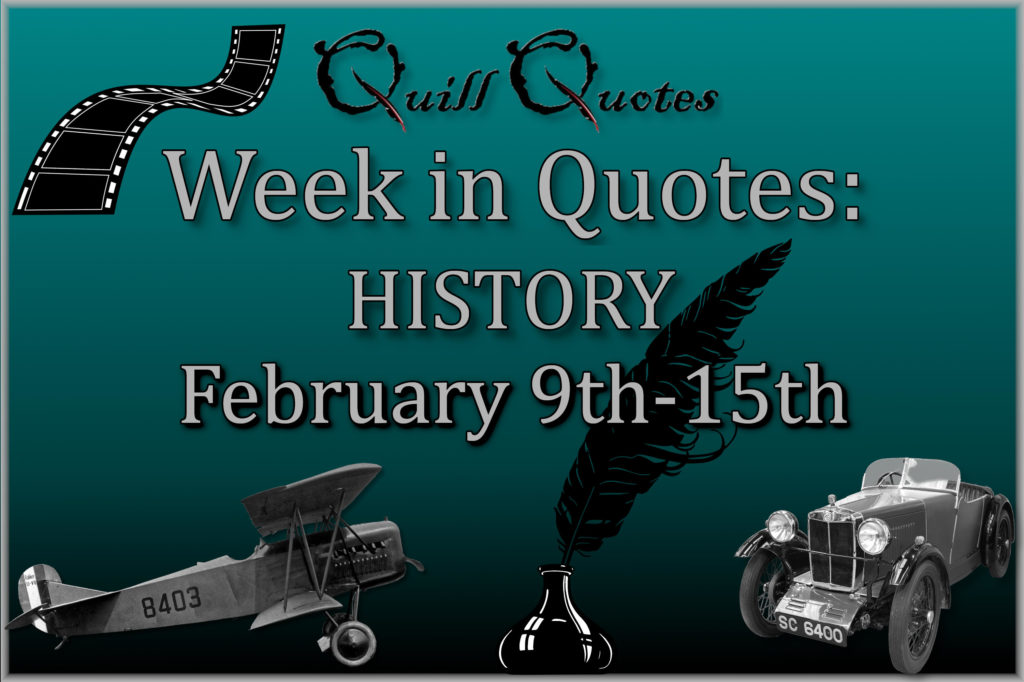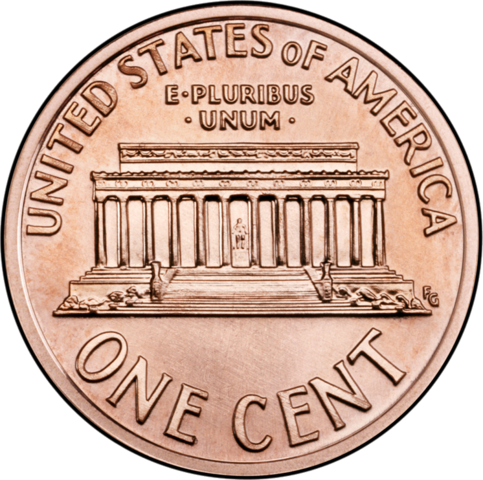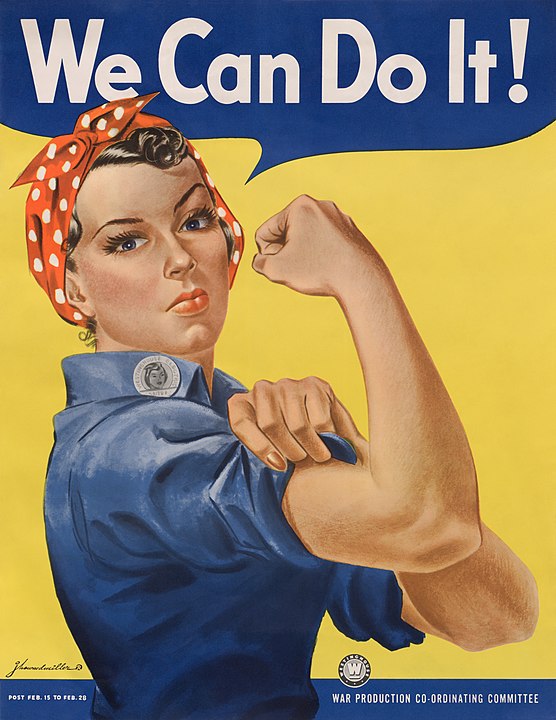There is always much to learn from quotes and their historical significance. Read on for a collection of quotes and general history from February 9th – 15th.

February 9, 1950
“The State Department is infested with communists. I have here in my hand a list of 205—a list of names that were made known to the Secretary of State as being members of the Communist Party and who nevertheless are still working and shaping policy in the State Department.”
– Joseph McCarthy
On February 9, 1950, U.S. Senator Joseph McCarthy quickly entered the national spotlight when he gave a speech claiming to have a list of “enemies within”, 205 known Communists working for the State Department. His accusations led to a Senate investigation, known as the Tydings Committee, which was decisively split along party lines. Republicans stood with McCarthy while the Democratic majority concluded there was no proof that the individuals on McCarthy’s list were Communists, continuing that McCarthy sought only to “confuse and divide the American people … to a degree far beyond the hopes of the Communists themselves”. McCarthy continued to make many unsubstantiated accusations throughout his Senate career leading to his censure in 1954 and the creation of the term “McCarthyism” to refer to his smear tactics.
February 10, 1962
“Mr. Powers lived up to the terms of his employment and instructions in connection with his mission and in his obligations as an American.”
– CIA director John McCone
On February 10, 1962, CIA pilot Francis Gary Powers and U.S. student Frederic Pryor were exchanged for Soviet KGB Colonel William Fisher, known as “Rudolf Abel”, at the Glienicke Bridge in Berlin. This famous spy swap was dramatized in the 2015 movie Bridge of Spies with Tom Hanks starring as negotiator James Donovan. Powers had been in Soviet custody for almost two years after his U-2 spy plane was shot down by an S-75 Dvina surface-to-air missile over Sverdlovsk. Initially, Powers was poorly received upon his return and questioned as to why he had not activated the aircraft’s self-destruct or used the CIA-issued “suicide pill”. However, he was later recognized as a hero and wrote Operation Overflight to capture his story.
February 11, 1990
“After climbing a great hill, one only finds that there are many more hills to climb.”
– Nelson Mandela
Nelson Mandela was released on February 11, 1990, after 27 years in prison for conspiring to overthrow the South African government. His life sentence was cut short by State President F. W. de Klerk, who he then worked together with to end apartheid and institute universal suffrage. In 1994, Mandela became president of South Africa in the first elections where citizens of all races were allowed to vote. His government focused on removing institutionalized racism left over from apartheid and fostering peace between the country’s racial groups. In 1999, he declined a second presidential term and instead focused on combating poverty and HIV/AIDS through the Nelson Mandela Foundation until his death in 2013. Nelson Mandela received more than 250 awards for his activism, most notably the Nobel Peace Prize, and is internationally regarded as an icon of democracy.

February 12, 1914
IN THIS TEMPLE
– Lincoln Memorial Epitaph by Royal Cortissoz
AS IN THE HEARTS OF THE PEOPLE
FOR WHOM HE SAVED THE UNION
THE MEMORY OF ABRAHAM LINCOLN
IS ENSHRINED FOREVER
A dedication ceremony for the soon to be constructed Lincoln Memorial was held in Washington, D.C. on February 12, 1914, the same day as Abraham Lincoln’s birth in 1809. Construction began the following month and was completed on schedule in May 1922. The memorial is in the form of a Greek Doric temple that houses a colossal seated statue of Abraham Lincoln. As the site of many famous speeches, including Martin Luther King Jr.’s “I Have a Dream” speech, the memorial has become a symbol for improving race relations. On the 150th anniversary of Lincoln’s birth, February 12, 1959, the Lincoln Memorial design of the U.S. penny began circulation. The memorial has also been depicted on the back of the U.S. five-dollar bill since 1929, with Lincoln himself on the front of both!

February 13, 1866
“My pistols, however, I always kept by me.”
– Jesse James
On February 13, 1866, $15,000 was stolen from the Clay County Savings Association in Liberty, Missouri, in what was possibly Jesse James’ first robbery. Having grown up in the South prior to the American Civil War, James joined a pro-Confederate guerrilla group known as the “bushwhackers” during the war. Even after the war ended, James continued a life of violence becoming an outlaw and robbing banks, trains, and stagecoaches across the Midwest. James was already famous for his crimes during his life but became a legendary Wild West figure after he was killed by Robert Ford, a new gang recruit, on April 3, 1882.
February 14, 496
“I think that Valentine’s Day is only as good as you want it to be. You know, I don’t think it should be anything fancy, nothing crazy. As long as you’re spending time with that person that’s special, I think that’s a great Valentine’s Day.”
– Prince Royce
Valentine’s Day began on February 14, 496, when Pope Gelasius I established the Feast of Saint Valentine. The feast honors the Christian martyr, Saint Valentine of Rome, who was executed for ministering to persecuted Christians on that date in 269. According to legend, Saint Valentine left a farewell letter to his jailer’s daughter on the morning of his execution signed “Your Valentine”. The day first became associated with romantic love in the 14th century, during the era of courtly love and Geoffrey Chaucer. Now, Valentine’s day is a significant cultural and commercial celebration of love and romance, in addition to its religious beginnings.
February 15, 1943
“We Can Do It!”
– “Rosie the Riveter”
The iconic World War II “We Can Do It!” poster was created by J. Howard Miller for Westinghouse Electric and first posted on February 15, 1943. While widely reproduced today, it was actually only posted in several Westinghouse factories in the Midwest and was seen very little during the war. Contrary to popular belief, the poster was not intended to inspire women to join the war effort but merely to encourage existing employees to work harder. However, after it’s rediscovery in the early 1980s the poster became associated with “Rosie the Riveter” and has often been used to promote feminism.

In case you missed last week’s quotes, see History February 2nd – 8th.
To never miss a Quill Quotes post, please subscribe via email and/or follow us on social media!
Leave a Reply